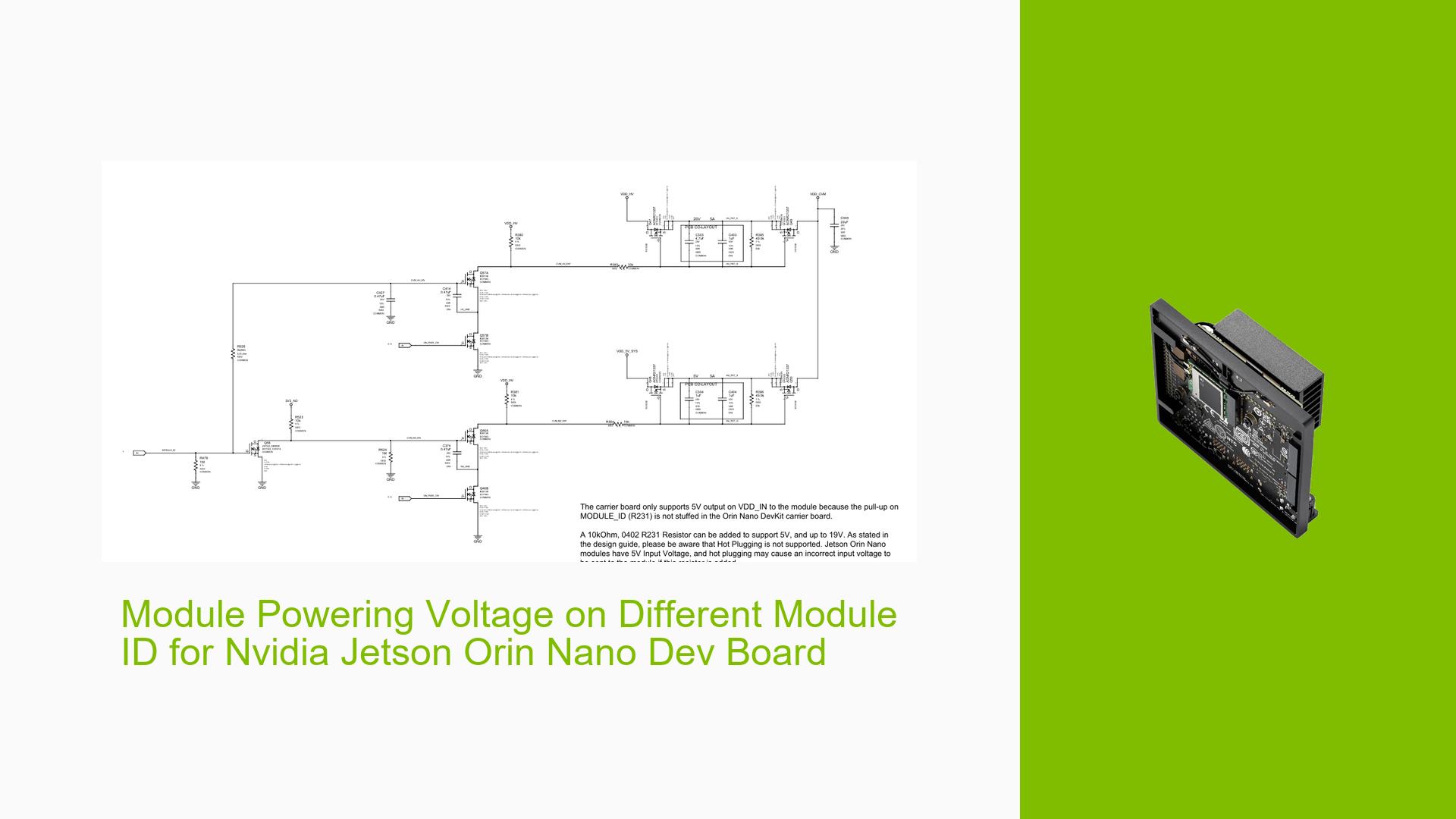Module Powering Voltage on Different Module ID for Nvidia Jetson Orin Nano Dev Board
Issue Overview
Users are experiencing confusion regarding the powering voltage levels on the VDD_IN pins while designing a carrier board for the Nvidia Jetson Orin Nano Dev Board. The issue arises from the schematic for version p3768, which presents two methods for different module IDs. Users are uncertain whether they can make the design compatible with both 5V and high voltage (HV) configurations or if they should connect to a single 5V line and eliminate the MV/HV power multiplexer circuit.
Specific Symptoms:
- Confusion about the appropriate powering voltage levels.
- Uncertainty about the compatibility of different module IDs with varying voltage requirements.
Context:
- The problem occurs during the design phase of a carrier board.
- Users are attempting to understand how to implement power supply configurations correctly.
Hardware/Software Specifications:
- The discussion primarily involves the Nvidia Jetson Orin Nano and Orin NX modules.
- The Orin Nano module requires 5V, while the Orin NX module supports a voltage range of 5V to 20V.
Frequency and Impact:
- This issue appears to be common among users designing carrier boards.
- Misconfigurations can lead to potential hardware incompatibilities or failures, impacting overall system functionality.
Possible Causes
-
Hardware Incompatibilities: Users may misconfigure their designs, leading to incompatible power supply setups for different module IDs.
-
Configuration Errors: Incorrectly setting up the power supply circuit could result in improper voltage levels being supplied to the modules.
-
User Errors: Lack of clarity regarding how to handle the Module ID pin could lead users to make incorrect assumptions about its necessity.
-
Environmental Factors: Inconsistent power supply conditions could affect module performance, especially if not designed correctly.
Troubleshooting Steps, Solutions & Fixes
-
Identify Module Type:
- Confirm whether you are using the Orin Nano or Orin NX module. The Nano requires a strict 5V supply, while the NX can operate between 5V and 20V.
-
Power Supply Configuration:
- If using both modules, consider connecting both to a 5V line only. This approach simplifies the design by removing unnecessary complexity from the MV/HV power mux circuit.
-
Handling Module ID Pin:
- If you have a fixed power supply without a multiplexer:
- Leave the Module ID pin unconnected. This is acceptable if you are not planning to switch between different voltage configurations.
- Alternatively, you may choose to pull up the pin if needed, but it is not mandatory in fixed configurations.
- If you have a fixed power supply without a multiplexer:
-
Testing Power Supply:
- Use a multimeter to verify that your power supply consistently outputs 5V before connecting it to your carrier board.
-
Documentation Review:
- Refer to Nvidia’s official documentation for any updates on powering configurations and recommended practices for your specific module type.
-
Best Practices:
- Always ensure that your power supply meets the specifications required by your module.
- When designing carrier boards, consider future scalability and compatibility with other modules by potentially including a flexible power supply configuration.
-
Community Feedback:
- Engage with community forums for shared experiences and solutions that may have worked for others facing similar issues.
Recommended Approach
Multiple users have confirmed that connecting both modules to a single 5V line while leaving the Module ID pin unconnected is an effective solution. This method simplifies design while ensuring compatibility across both modules.
